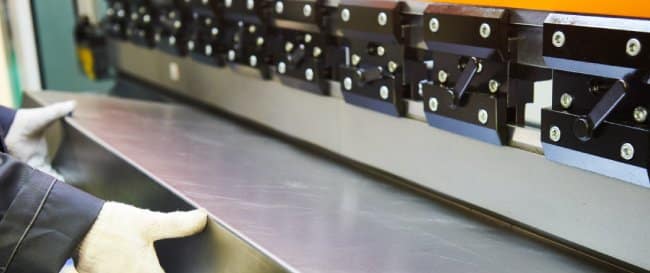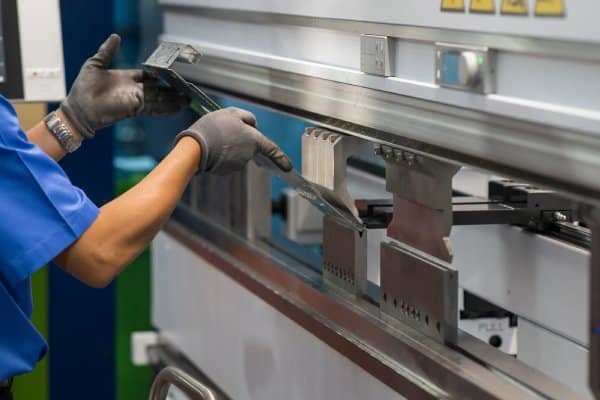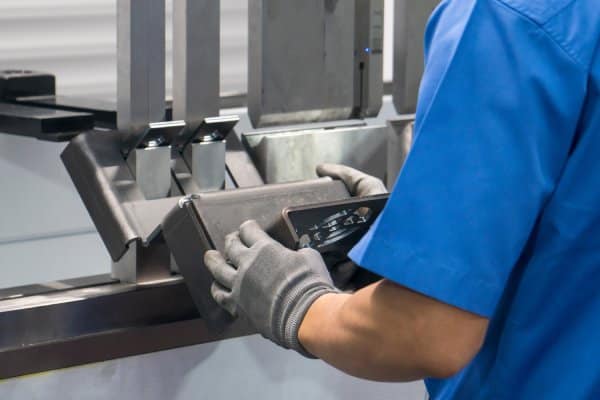What is Press Braking?

Press braking is a process used to form sheet metal with a press brake machine. To form metal into a predetermined shape, sheet metal is placed on top of a die, and a punch is lowered to bend the metal. There are also press braking alternatives as suitable solutions, such as cold roll forming.
Got a question?
Talk to the experts today, get the support that speaks your language...
What are some typical press braking applications?
Press braking applications manufacture many different products across a wide range of industries. Typical press braking extrusion applications include:

Disadvantages Of Press Braking:
Potential for Costly Mistakes
The ram inside the machine must complete a full cycle when engaged and cannot be reversed, leading to costly mistakes.
Difficult to Master
Safety concerns with repeat production line process as it is challenging to safety devices with the press brake machine. The press brake can become locked if the ram travels too far, and the machine can also become overloaded quickly.
How accurate is press braking?
Achieving consistent angles can be challenging with a press brake machine. Working to tight tolerances can be an issue when using a press brake machine and impacts the finished result.

What Is Cold Rolling?
Cold Rolling Applications
Cold rolling involves changing the shape of metal without using heat. Instead, cold roll forming is carried out when the metal is at room temperature. Mechanical strain is applied to the metal to shape it during the process.
Advantages Of Cold Rolling:
Greater Accuracy
Research published in the International Journal of Mechanical Sciences shows that spring back is reduced when metal is bent using cold roll forming techniques compared with press braking. This reduction in spring back enables cold rolling to offer a far higher accuracy rate.
Increased Strength
Cold rolled steel has a higher yield strength than press braking and hot rolled steel. Cold worked metal achieves higher tensile strength by using mechanical force to change its crystalline makeup permanently.
High-Speed Production
The accuracy achieved through the cold rolling process also makes it an excellent choice for projects requiring repeatable, consistent parts. Producing compatible parts each time enables you to create a high-speed production line.
Cost Reduction
Cold rolling enables you to deliver greater volumes with increased accuracy. This significantly reduces your costs without compromising on quality.
Factors To Consider When Choosing Which Fabrication Method Is Best
When choosing between roll forming and press braking for your metal fabrication needs, there are several key factors to consider.
Length
The roll-forming process can produce complex shapes and is ideal for longer parts.
On the other hand, press braking requires separate hits for each bend and may require additional operations and fasteners to achieve the desired length. This can add costs and complexity to the fabrication process.
Material Selection
Material selection impacts the cost and design of the fabrication process.
The right material can optimise the fabrication process and save you money. Both roll forming and press braking can handle lighter materials, such as light gauge high-strength low-alloy steel or flat-rolled steel. However, high-strength materials can be challenging to press brake because of controlling springback.
Metal Fabrication Design
When it comes to metal fabrication design, both roll forming and press braking have their advantages.
Roll forming can form complex linear shapes in a single pass, reducing tooling costs and production time. It is particularly beneficial for longer parts and can produce consistent, high-quality results.
On the other hand, press braking allows for precise metal bends and is better suited for smaller volumes. It is a cost-effective option for shorter runs and offers easier setup.
Read more...
Enquire Today About Our Cold Roll Forming Process
Choosing cold roll forming provides a wide range of benefits compared to press braking. MCRS’s cold roll forming process will improve efficiency, increase accuracy, and provide extra strength to your metalwork. Learn more about our bespoke roll forming profiles and how we can offer the perfect engineered solution for your business.
Discover more about our cold roll forming process and how it will benefit you.
You can contact our friendly, knowledgeable and experienced team for enquiries relating to cold roll forming via telephone, email or filling out the contact form
